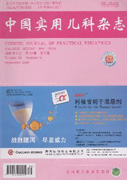|
|
Clinical analysis of autosomal dominant noctumal frontal lobe epilepsy.
ZHAI Qiong-xiang,GUI Juan,ZHANG Yu-xin,CHEN Zhi-hong.
2009, 24(03):
200-202 .
Objective To explore the clinical characteristics of 6 pedigrees of autosomal dominant noctumal frontal lobe epilepsy in China.
Methods The probands of 6 families in China from January,2001 to December, 2007, who were referred to our department for recurrent seizures
and seizure history were investigated on affected individuals and unaffected, thus the comprehensive pedigrees were constructed and the
clinical data were analyzed. Types and epilepsy syndromes were classified according to international classification. The results were
analyzed with the software of SPSS 13. 0 and the incidence of recurred seizures was tested in males and females with χ2 test. Results There
were 59 people in 6 families, including 24 patients, but only 22 survived (9 male and 13 female). The incidence of recurrent seizures in
males and females had no significant difference(χ2=0. 413,P > 0. 05). There were 20 patients who were characterized by clusters of brief
seizures during night sleep and EEG showed spike-slow waves in frontal lobe. One patient’s symptom was tonic seizures, developing from
simple partial seizures. His AEEG showed spike-slow waves and high amplitude θ waves in frontal section on both sides. And the other patient
symptom was self-motion syndrome and seizures during night sleep. The EEG showed spike-slow waves in frontal and center sections on left
side. The attacks were well controlled by antiepileptic drugs. All the patients ‘nerve system examination and MRI were normal. Conclusion
ADNFLE is characterized by clusters of brief seizures during night sleep that are often misdiagnosed as nightmares.
|

